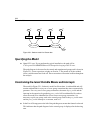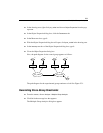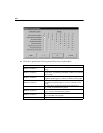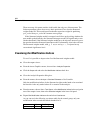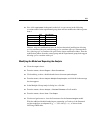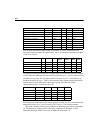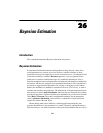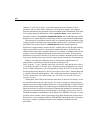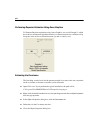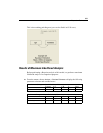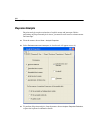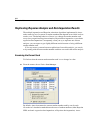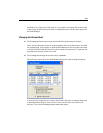
386
Example 26
interpret. A good way to start is to plot the marginal posterior density for each
parameter, one at a time. Often, especially with large data samples, the marginal
posterior distributions for parameters tend to resemble normal distributions. The mean
of a marginal posterior distribution, called a posterior mean, can be reported as a
parameter estimate. The posterior standard deviation, the standard deviation of the
distribution, is a useful measure of uncertainty similar to a conventional standard error.
The analogue of a confidence interval may be computed from the percentiles of the
marginal posterior distribution; the interval that runs from the 2.5 percentile to the 97.5
percentile forms a Bayesian 95% credible interval. If the marginal posterior
distribution is approximately normal, the 95% credible interval will be approximately
equal to the posterior mean ± 1.96 posterior standard deviations. In that case, the
credible interval becomes essentially identical to an ordinary confidence interval that
assumes a normal sampling distribution for the parameter estimate. If the posterior
distribution is not normal, the interval will not be symmetric about the posterior mean.
In that case, the Bayesian version often has better properties than the conventional one.
Unlike a conventional confidence interval, the Bayesian credible interval is
interpreted as a probability statement about the parameter itself;
Prob ) literally means that you are 95% sure that the true value of
lies between a and b. Tail areas from a marginal posterior distribution can even be
used as a kind of Bayesian p value for hypothesis testing. If 96.5% of the area under
the marginal posterior density for lies to the right of some value a, then the Bayesian
p value for testing the null hypothesis against the alternative hypothesis
is 0.045. In that case, one would actually say, I’m 96.5% sure that the alternative
hypothesis is true.
Although the idea of Bayesian inference dates back to the late 18
th
century, its use
by statisticians has been rare until recently. For some, reluctance to apply Bayesian
methods stems from a philosophical distaste for viewing probability as a state of belief
and from the inherent subjectivity in choosing prior distributions. But for the most part,
Bayesian analyses have been rare because computational methods for summarizing
joint posterior distributions have been difficult or unavailable. Using a new class of
simulation techniques called Markov chain Monte Carlo (MCMC), however, it is now
possible to draw random values of parameters from high-dimensional joint posterior
distributions, even in complex problems. With MCMC, obtaining posterior summaries
becomes as simple as plotting histograms and computing sample means and
percentiles.
a
θ
b≤≤()0.95=
θ
θ
θ
a≤
θ
a>



